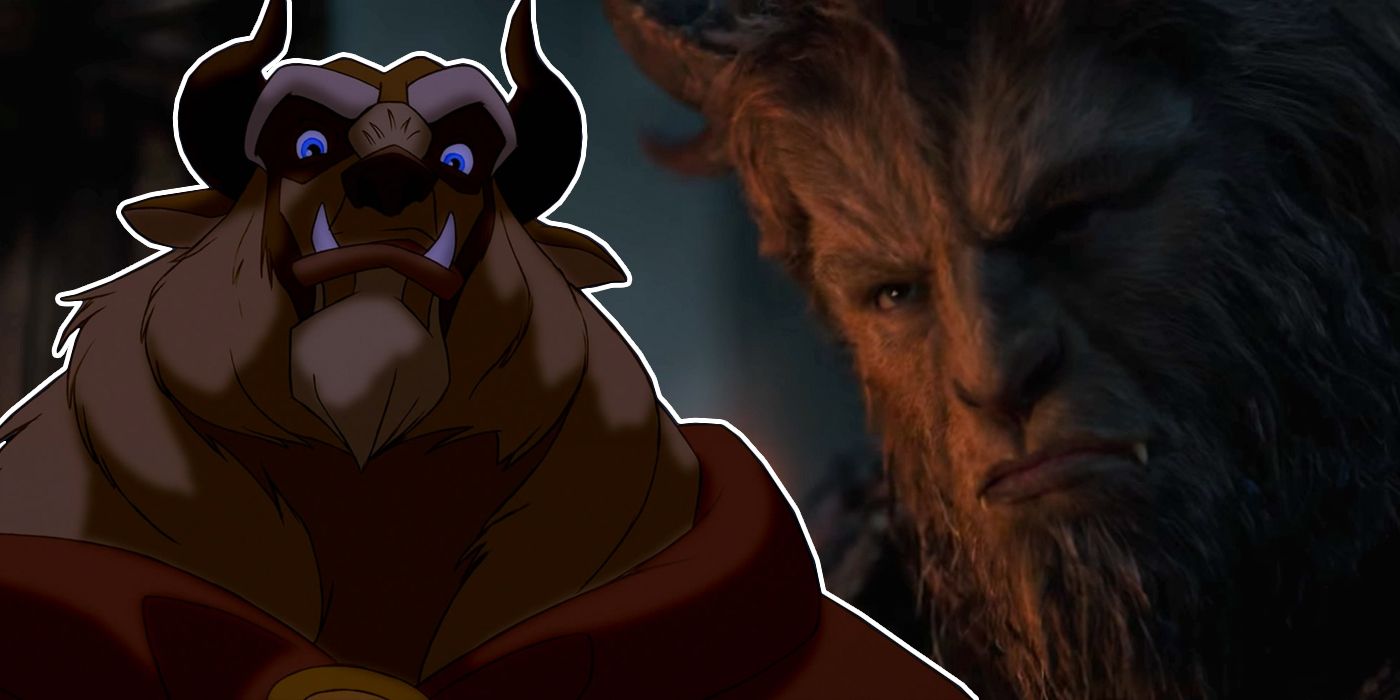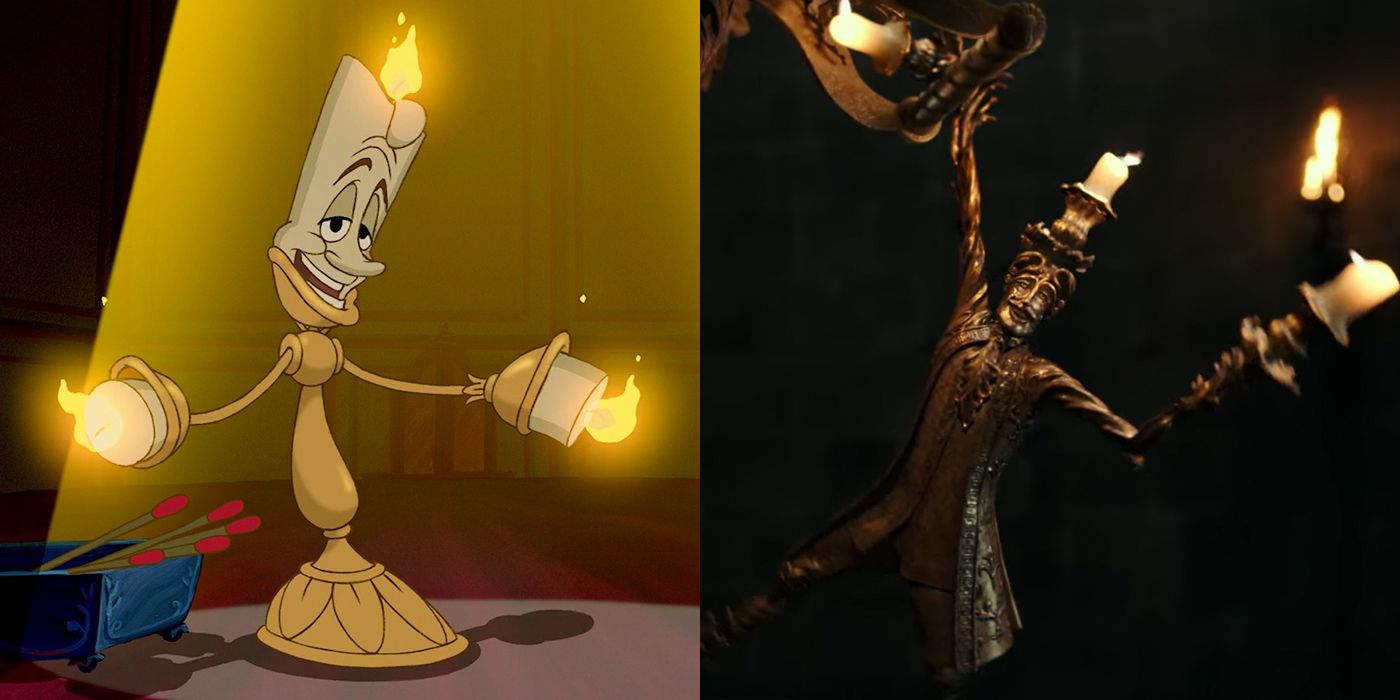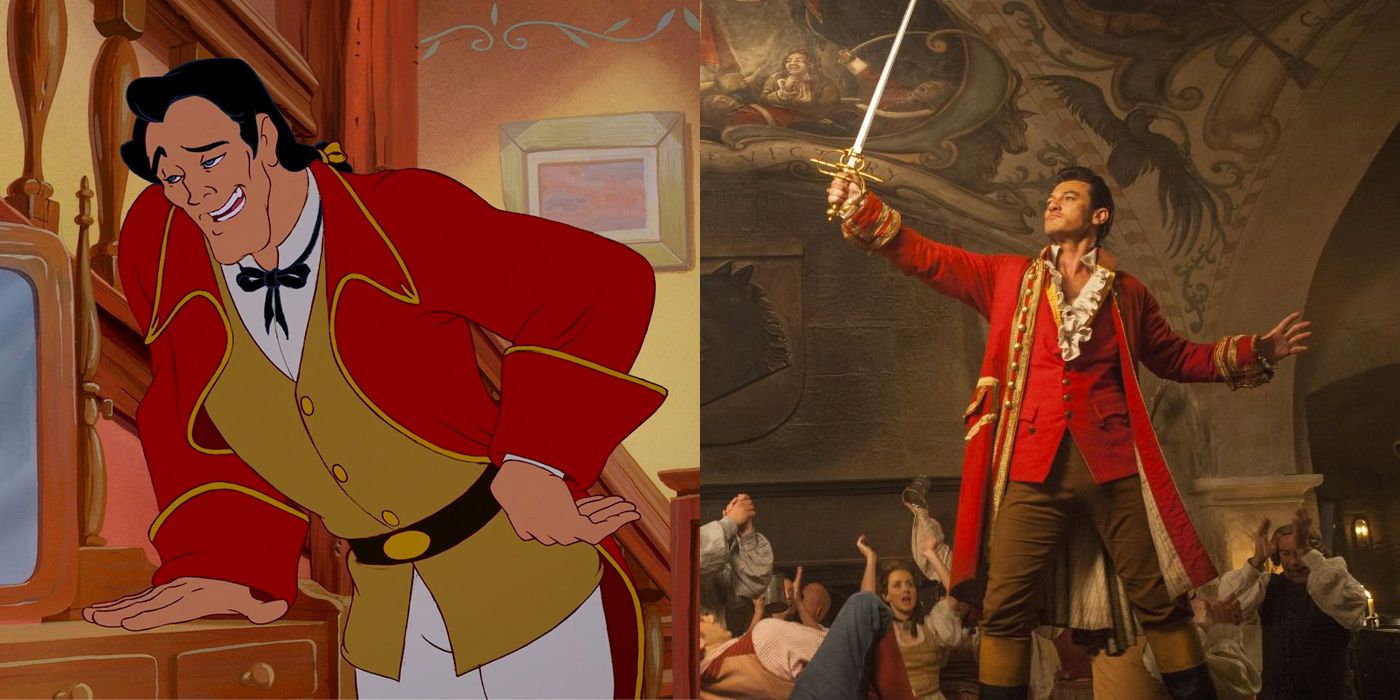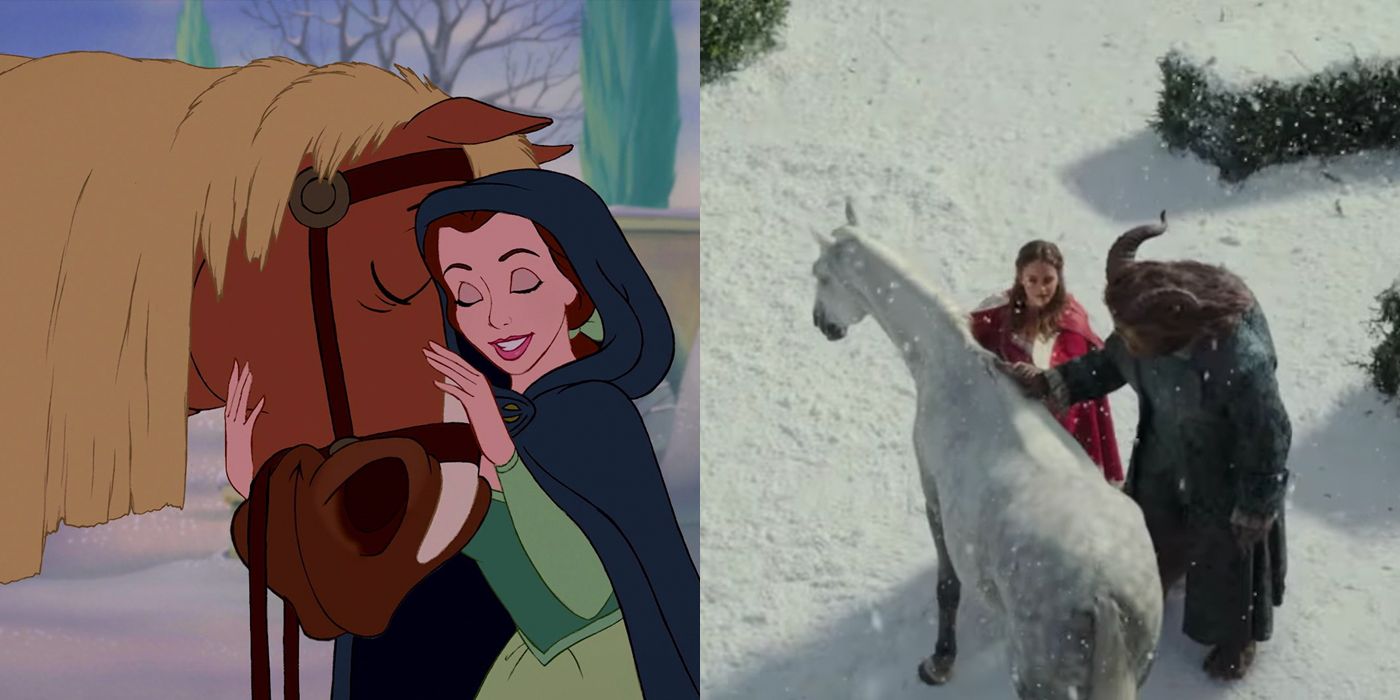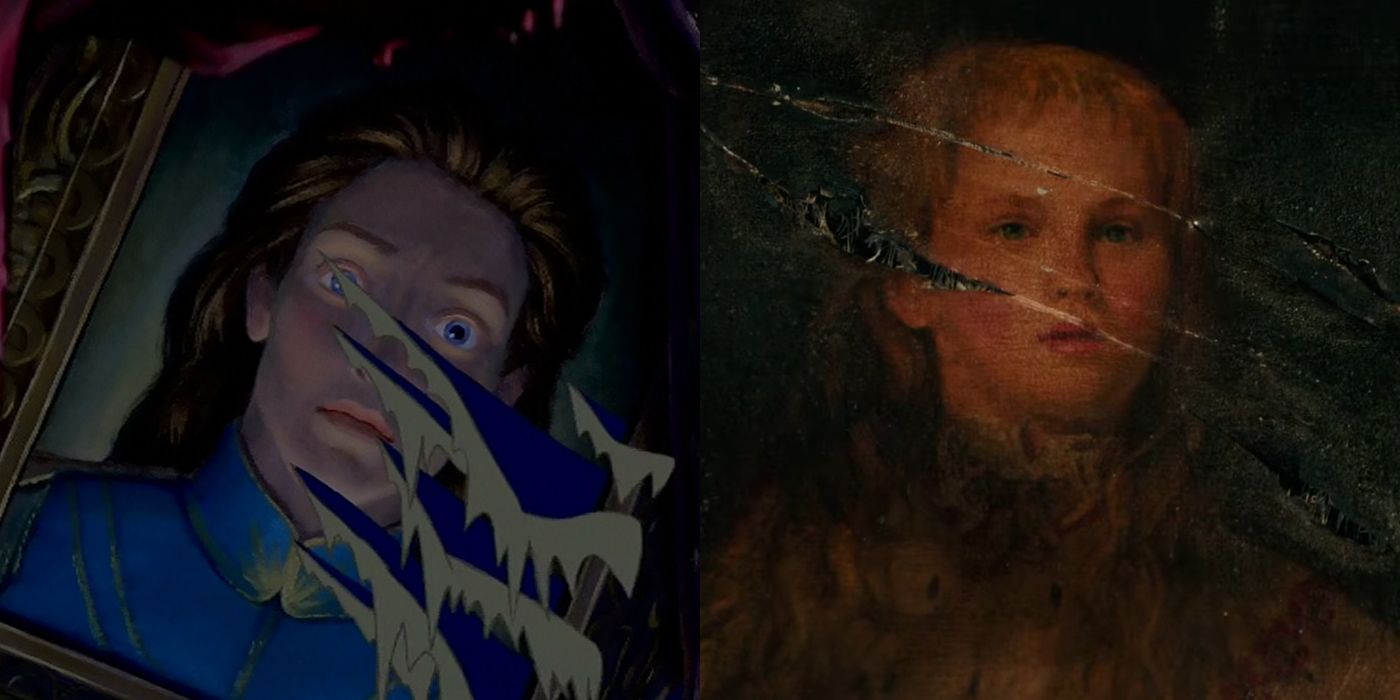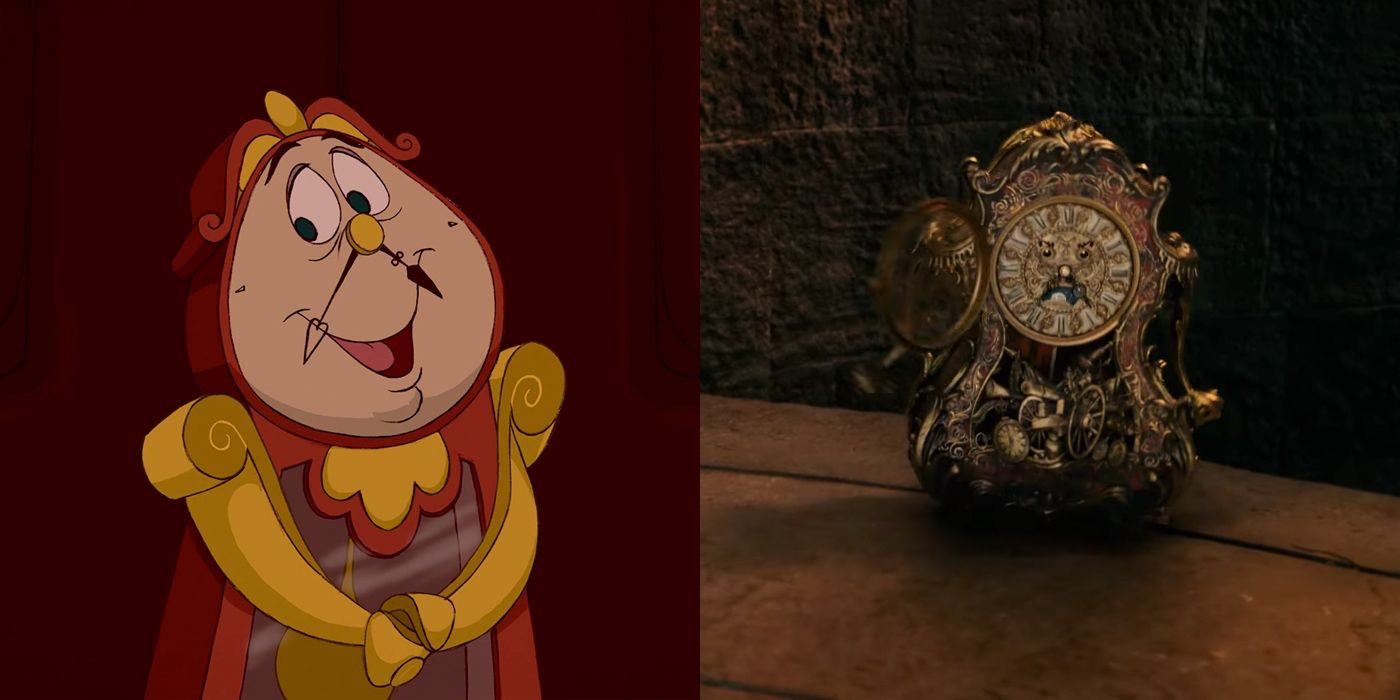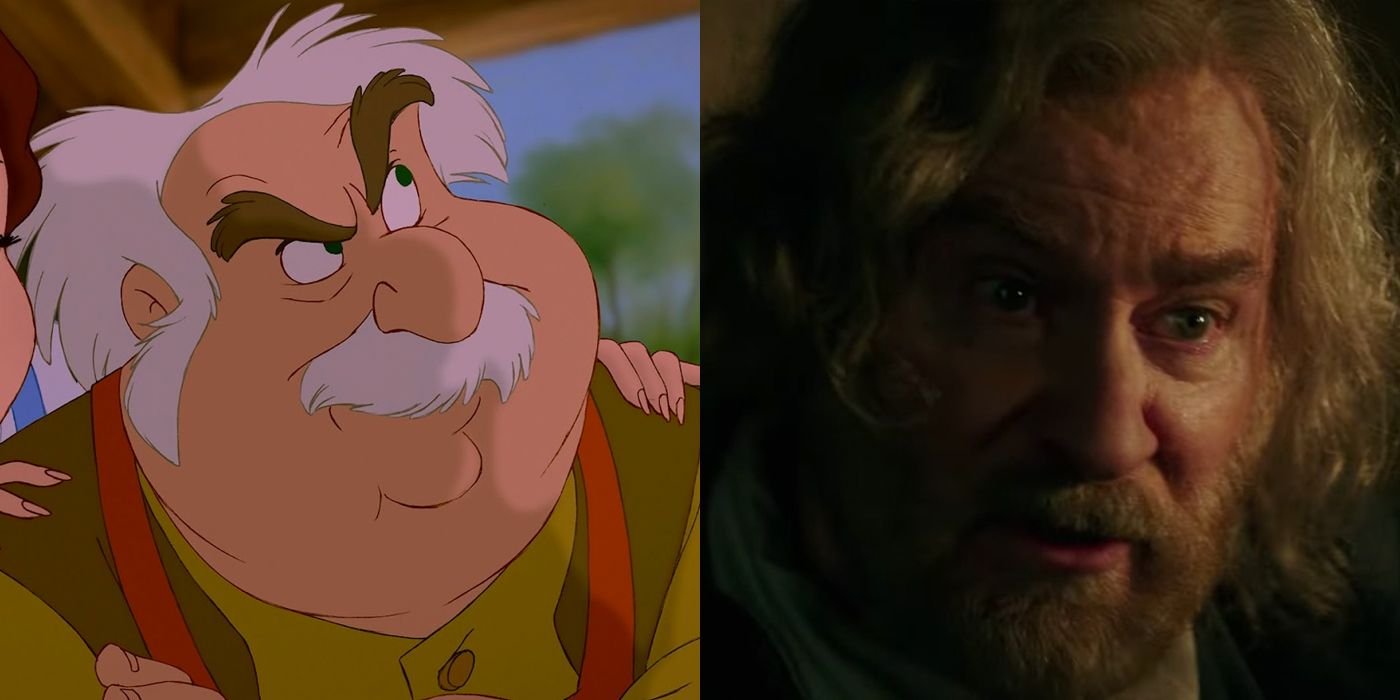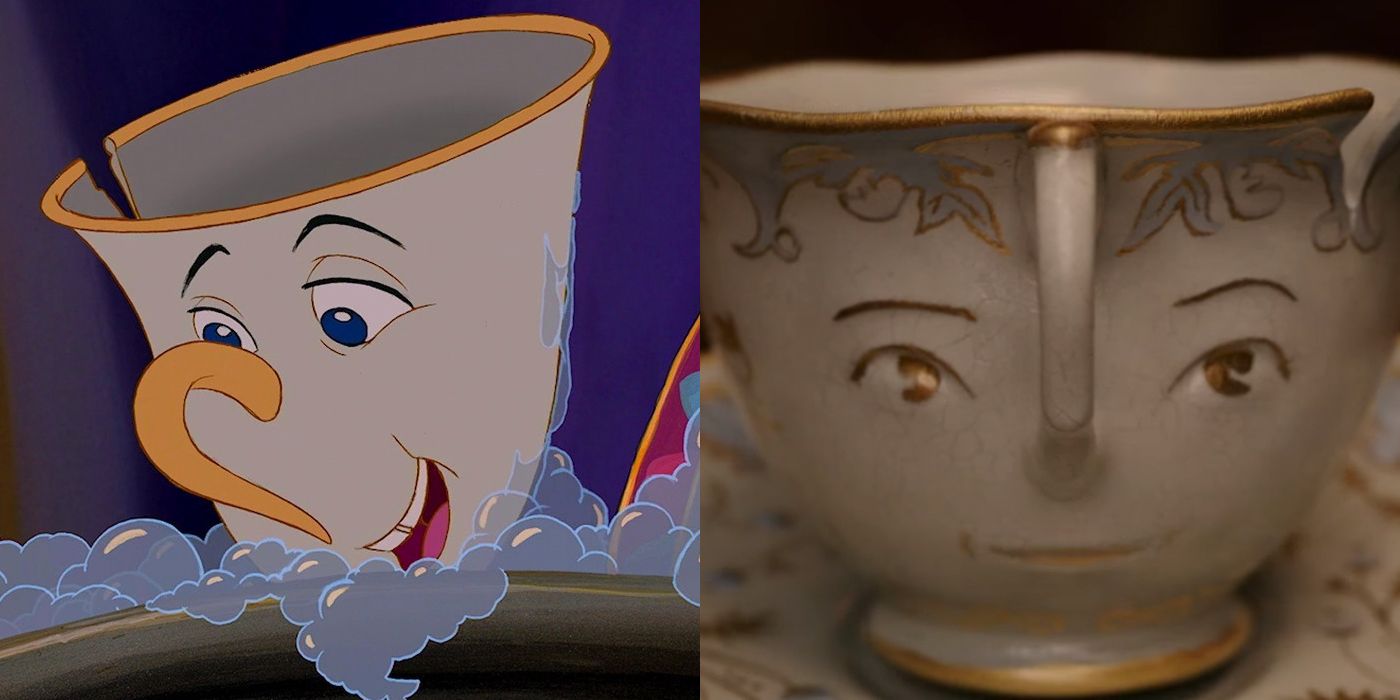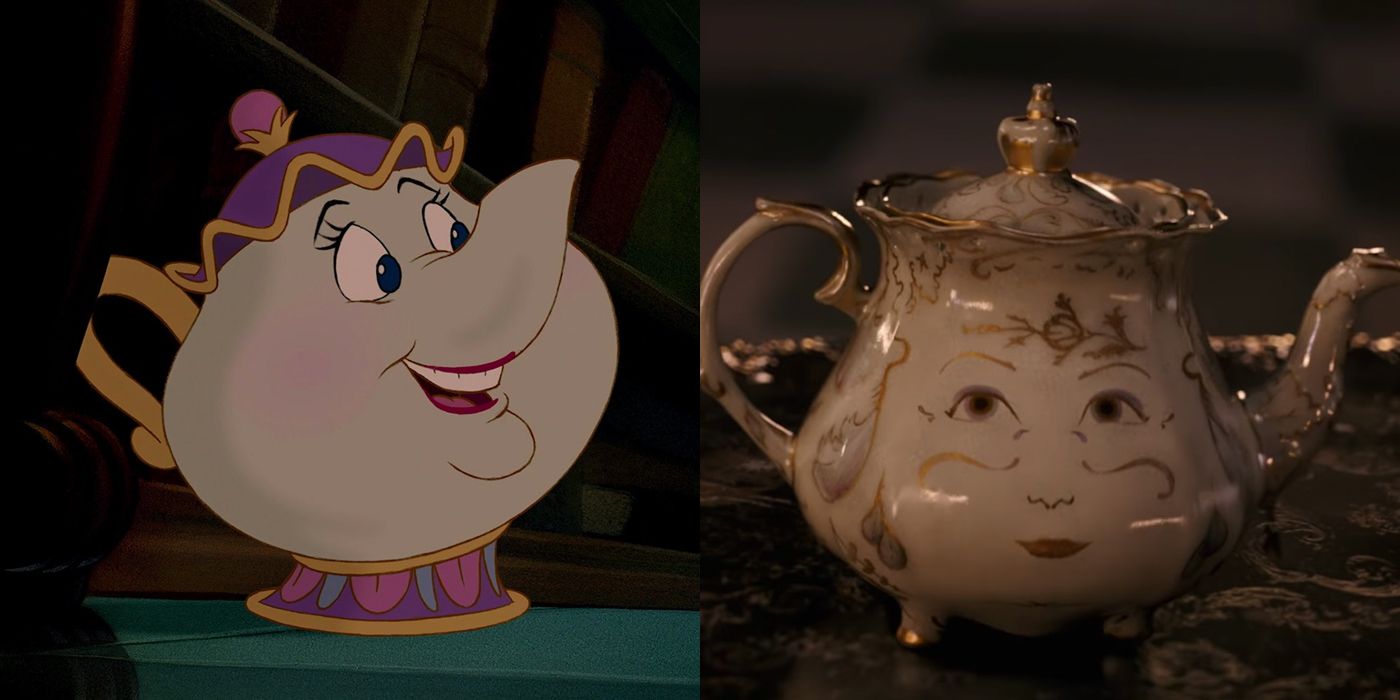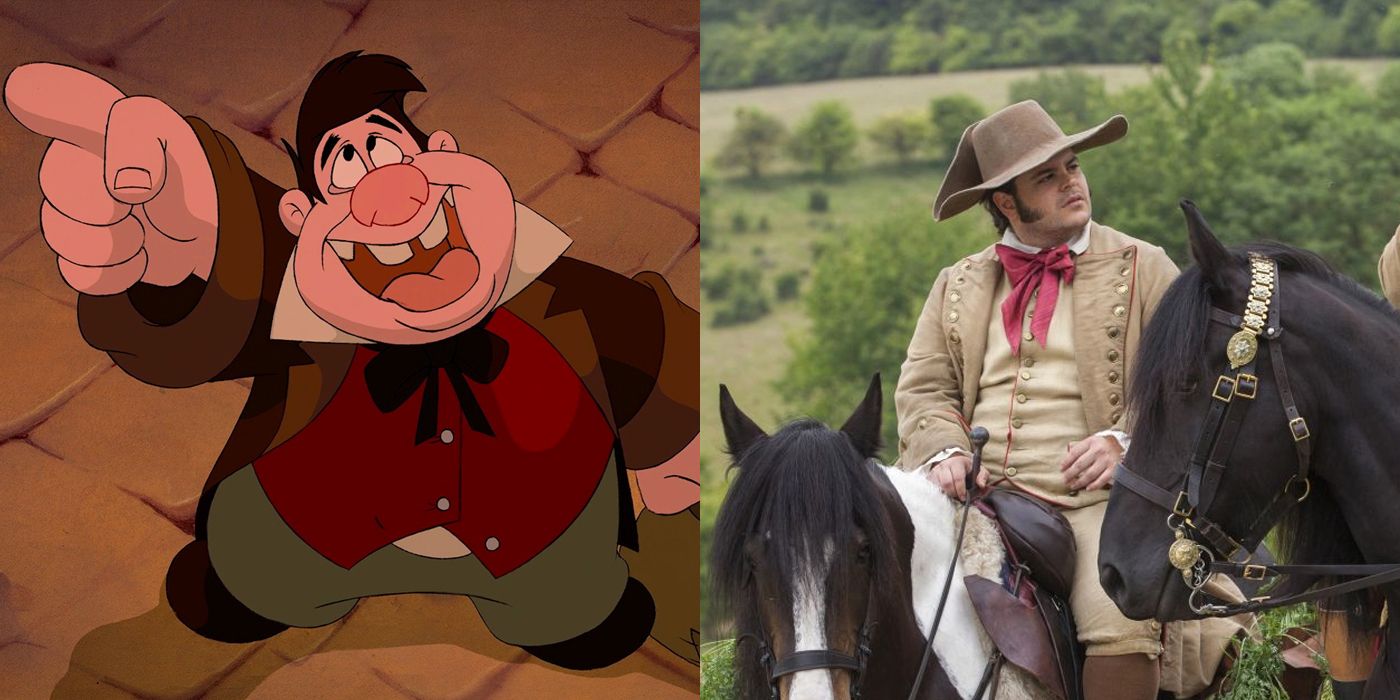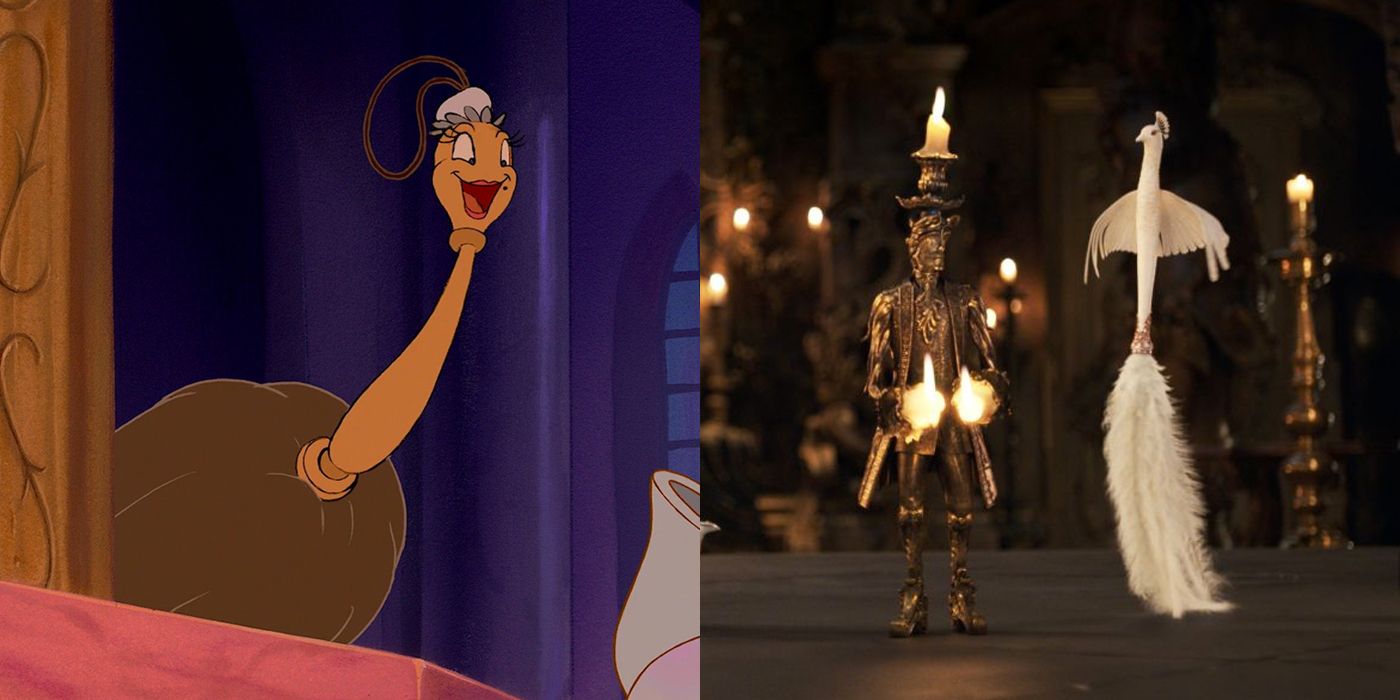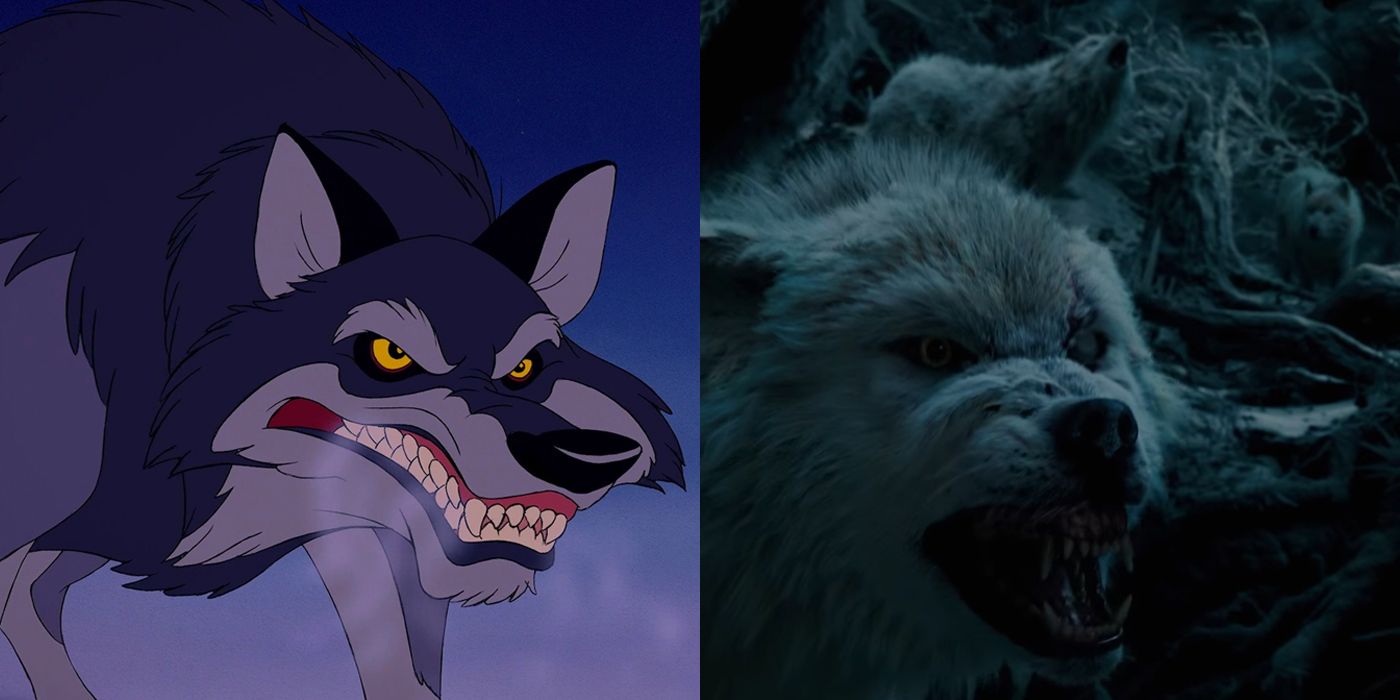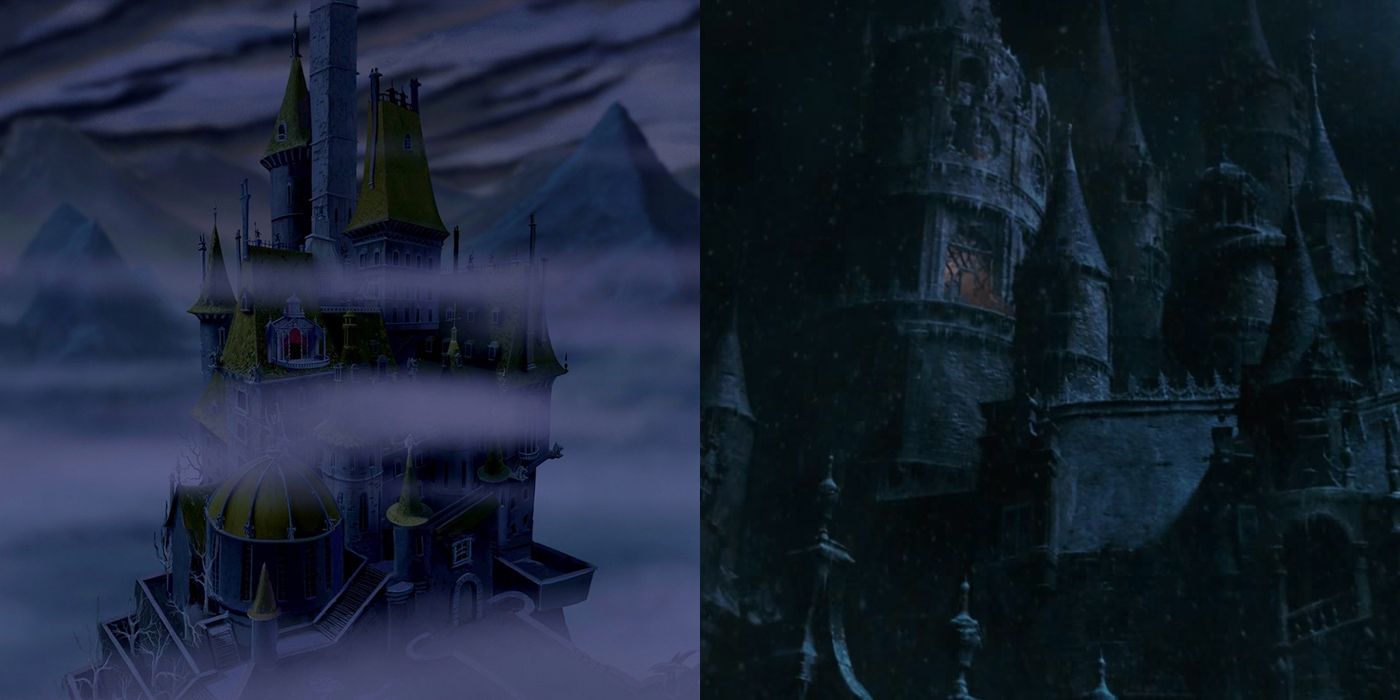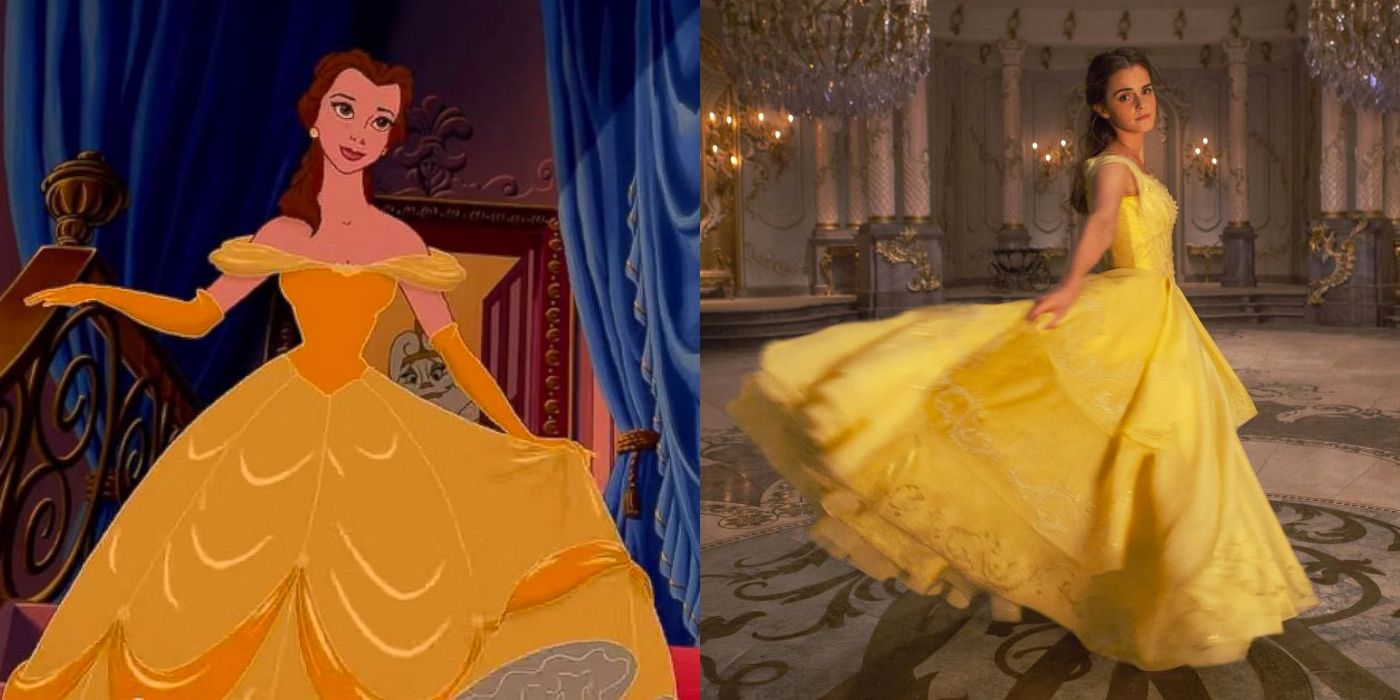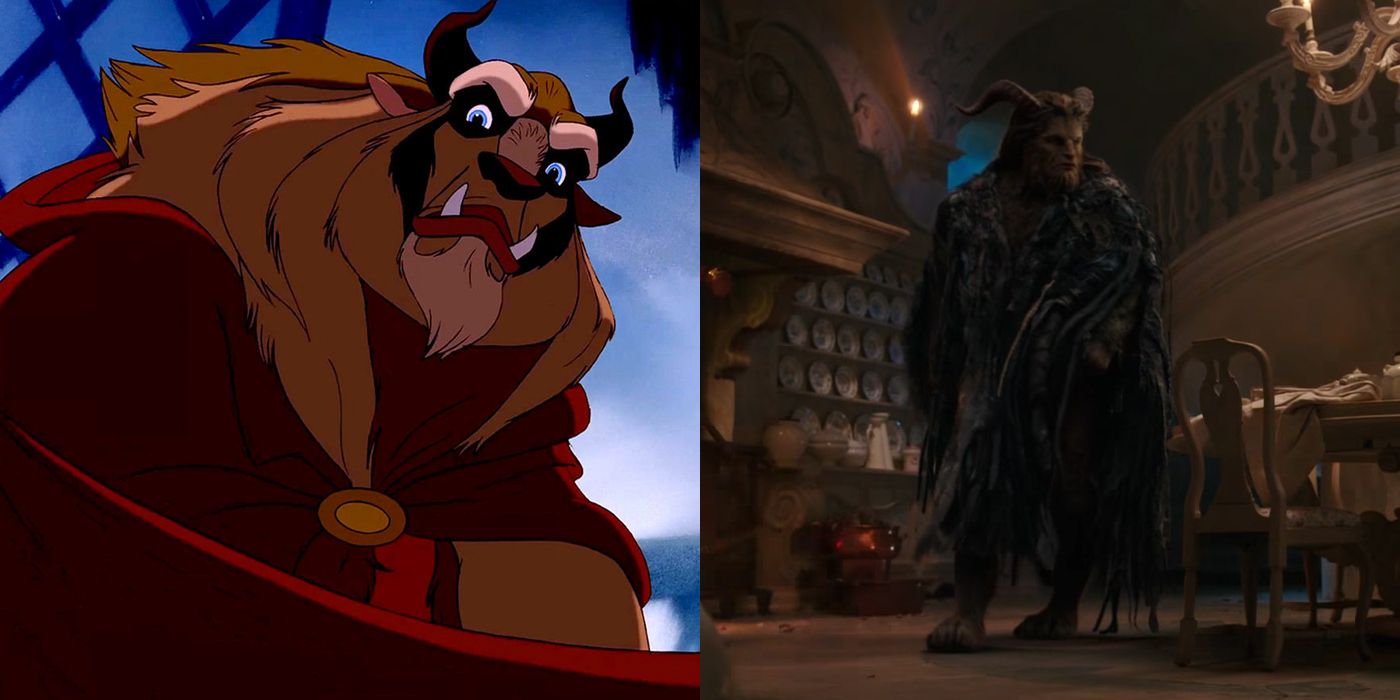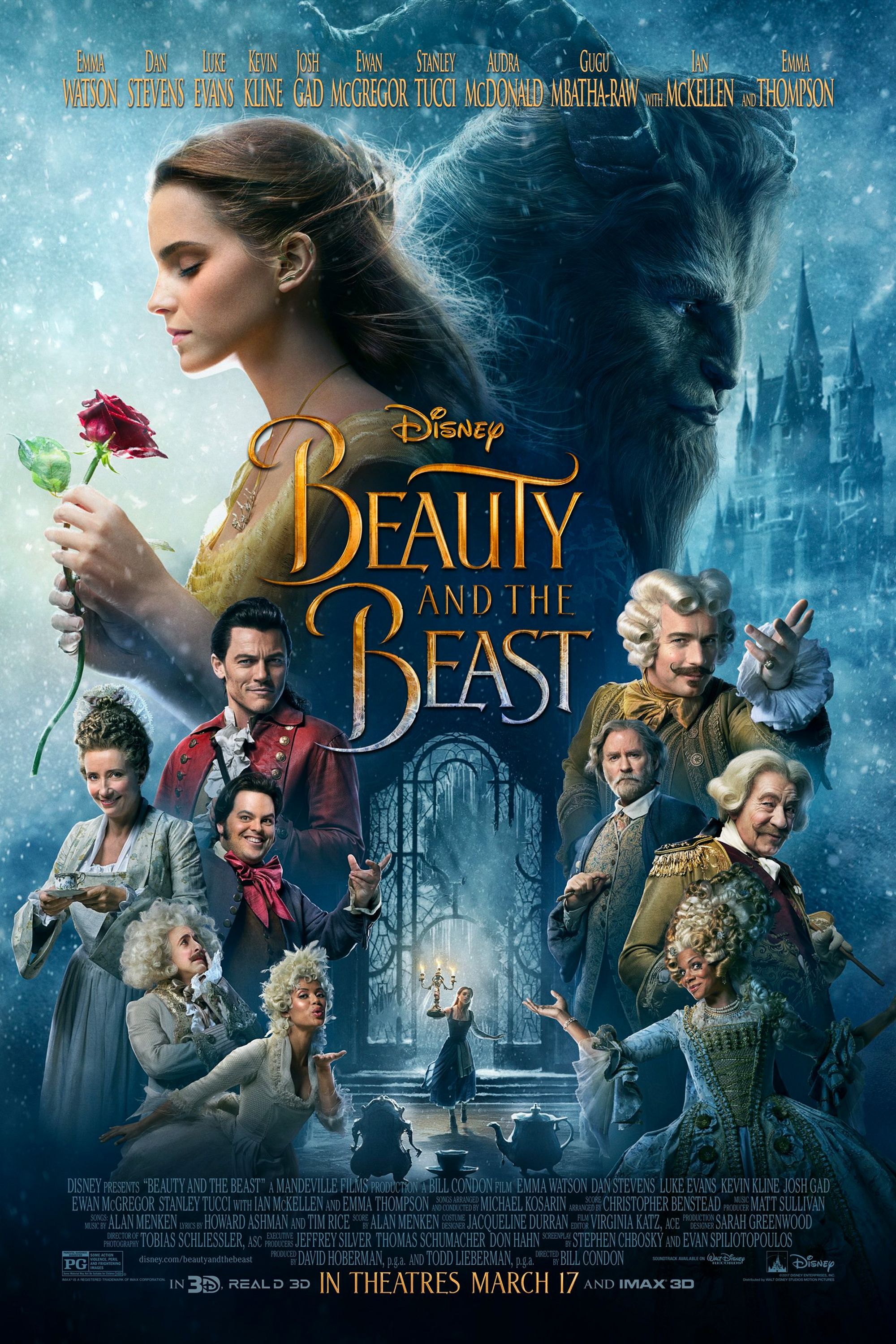Disney have already remade animated classics Alice in Wonderland, Sleeping Beauty, Cinderella and The Jungle Book in live action (also 101 Dalmatians if you go back as far as 1996), but next up they're taking on the biggie, one of their undisputed greats and the only animated Mouse House production to be nominated for Best Picture at the Oscars: Beauty and the Beast. Fitting its status (and how successful the previous movies were), this looks to be their most anticipated remake yet - both of its trailers have smashed view records, making the excitement for films like Star Wars: The Force Awakens look positively passé.
The big thing we learnt from those trailers is just how much director Bill Condon is trading in on the original’s iconography, with so many classic images and moments being faithfully recreated (to the point one smart fan made a full-on comparison). But that doesn’t mean the film is simply going be the 1991 classic redone shot-for-shot. Just as the previous reamkes made some big changes to update their stories for 21st Century audiences, so too has Condon here made subtle adjustments, especially in regards to characters: they may be living in the same story, but some our heroes, villains and comic relief aren’t all identical to their animated counterparts. Here's a breakdown of how 14 Live Action Characters Compare To Disney's Original.
Because we’ve only got two trailers and a few images to go on, the comparisons will be mostly focused on the character designs, but where information on story or personality changes are known, they’ll be worked into the discussion.
14. Lumière
The principal singer of Be Our Guest, Lumière is one of the castle’s most welcoming staff-cum-object, from the very start trying to help Belle in any way possible and not-so-subtly pushing the Beast’s affections towards her (if being a little mischievous along the way). Scottish actor Ewan McGregor at first seemed like odd voice casting, but he’s replicating the broad, respectable French accent well and seems to have maintained the exuberant, free-wheeling yet loyal personality.
Visually Lumière also boasts one of the animation’s most memorable designs, and it may be in an attempt to distinguish the remake that he’s been changed so much. The basic elements are the same - he’s still a golden candelabra - but the design is much more detailed and ornate (as is necessary with the translation to live action) and the base forms a more standard body shape, with his face worked into the metal. That’s a rather big switch, but given the weirdness of the original design is ultimately rather logical. He does still use his side candlesticks as arms, however, which should come in handy in his big musical number.
13. Gaston
There may be no one quite like Gaston, but boy does Luke Evans comes close. Despite having to cast real people, rather than creating CGI models, the humans in the remake tend to hew closer in design to the original, and nowhere is this truer than with the suavely dim-witted villain.
Evans has taken on several iconic characters before – Dracula in Dracula Untold, Bard in The Hobbit – to mixed results, but here looks pretty much spot on, with any noteworthy differences coming from having to make a caricature (you can’t actually eat five dozen eggs in the morning) real. Props really go to the costume department; they've actually upped the ostentatiousness of his getup, with a ruffed shirt and gilded jacket worn throughout. And check out that sword. Even his voice, which isn’t as egotistically booming, still carries that arrogance all girls but Belle swoon for.
The only knock is that his muscles aren't as freakishly big as his cartoon counterpart’s, but that’s a minor quibble when everything else is so spot on (just change the lyric).
12. Philippe
Philippe may not quite stand-out in the pantheon of Disney horses– he's not as developed as Hercules' Pegasus or frankly adorable as Tangled's Maximus– but Belle's family steed is a steadfast and uncompromising companion. As a straight-up animal, with no magical influence, he was always the one who risked having his personality scaled back the most - while Disney loves to domesticate its horses, that wouldn't work in a live-action film (unless we're in full wilderness mode like The Jungle Book) - and while we've not seen much of him yet, it's fair to assume he's going to be a more docile presence.
Beyond that, there's been a pretty big aesthetic change – the brown horse has become a white stallion! We know that's Philippe too, because Maurice is seen riding him earlier on in trailer. Odd at first, it's a fair switch when you consider how different a character a non-animated Philippe will be – he's a more elegant, conventionally loyal steed.
11. The Prince
A notorious plot hole in the original movie is that for the Beast to have been cursed for ten years (as stated by Lumière) and for it to have not yet reached his 21st birthday and become permanent, he must have been turned into the monster at age eleven, making the witch’s punishment for rudeness a little too sadistic. To make things more jarring, all the paintings of the prince pre-transformation show him as a fully-grown adult, a form he surely wouldn’t take until the end of the movie. Did the staff keep making new portraits of what he would look like to really wind him up?
Likely in an attempt to address this (The Jungle Book likewise corrected several story oversights from the original animation), the Prince we see in paintings in the remake is actually a child. While that’s certainly a big difference on the face of it, it does ultimately mean that the original’s time period and continuity is still being maintained. However, the Prince is also seen flanked by his parents, which creates a completely different dangling question.
Of course, when he eventually transforms back at the end (spoilers for this tale as old as time), the Prince will be played by Dan Stevens in all his human glory, and we already know how spot on he looks.
10. Cogsworth
Luke Evans isn't the only Hobbit alum in Beauty and the Beast, with Ian McKellen taking on vocal duties for head of the household-cum-walking clock Cogsworth. Unlike McGregor's French tones, McKellen's doing pretty much his regular voice, which is fine given the original was always a British manservant, but he brings a pompousness that suggests a more fastidious personality.
It's in the design where things are most interesting. On the one hand, this is a similar rejig to Lumière, with things a little more real and elegant, but the key elements still there - the overall shape, face placement (right down to the clock handles as a pencil moustache), the delicate middle-parting hair crown - yet the way he moves is so different. Animated Cogsworth is, well, animated, able to move his arms and legs freely and contort his face into all manner of humorous shapes, but the CGI version looks to be considerably more rigid; he hobbles rather than walks, with his body solid and limited arm movement.
This again points towards a more uptight characterisation, but should also up some nice contrast (read: bickering) with the free-moving Lumière.
9. Maurice
Obviously Kevin Kline wouldn't be quite as rotund as the cartoon version of Belle’s inventor father, and neither is it all that surprising that he’s been made less Einstein-y given how odd that would translate to live action, although when it comes to Maurice the big difference here appears to be in personality.
Maurice’s primary purpose in Beauty and the Beast is to move the plot along in its early stages – it’s him whom Belle sacrifices herself to a life imprisoned by the Beast and later inspires Gaston to kick-start his various nefarious schemes. This gives a lot of freedom when adapting the character, and it appears that some of the joviality and bumblingness that defined him in animated form has been toned back as a result.
Indeed, one scene from the original that doesn’t appear to be present here is his rather whimsical reaction to the castle’s animated objects – the trailer shows him running afoul of the Beast in the grounds – which cuts out a key, lighthearted moment early on.
8. Chip
Isn’t Chip just adorable? Cute, playful and completely oblivious to the important of the timeless romance he's seeing play out (on that note, harkening back to the Prince plot hole, surely he's too young to have been alive when the curse began?), he's the perfect show of how harmless the castle can be. Possibly to accentuate that, in the live-action version he’s been maee a more delicate cup with fancier china work that further highlights his fragility. That said, when you really look at it in a micro form this is pretty close to the original - any changes are purely so it looks more realistic (as realistic as a talking cup can be).
However, there’s one difference that’s pretty damn major once you spot it: they’ve changed the chip’s side! That’s right - in the original animation it’s to the left of the handle, but here it’s on the right. At first, it may seem like such a strange change - significant yet needless - but it actually serves a really practical purpose: assuming a right-handed user, he's now so much easier to drink out of.
7. Mrs Potts
Chip may be broadly the same design, but his teapot mother’s a different matter. On top of all the adding detailing we saw on Chip and the other castle staff (which is nicely still mostly inspired by the original colour scheme), she's had her face shifted from the "front" of the pot to the side. It may seem strange that she's had it moved when Chip didn't, especially as, based on various bits of merchandise, he's the one who looks weirder in three dimensions, but when you consider the real logistics of it - to make the spout a nose you have to allow for a massive space below for the mouth - it begins to actually make some sense.
Despite such a big design switch, it's unlikely Emma Thompson will stray much from the original in her performance: Mrs Potts fills such an essential, motherly role that would be impossible to pass off to other characters.
6. LeFou
Disney couldn’t have picked a better actor to play LeFou than Josh Gad. After all, he’s already played the short comic relief in an animated Disney film before (Olaf in Frozen), and while the stout character here’s more villainous, it calls upon similar talents and balance between bathos and drama.
From a design perspective, a lot had to be changed regardless of who played the role; LeFou is most overtly cartoony human in the animation, and that extreme ugliness - there's not an inch of him that isn't pathetically grotesque - would obviously need to be toned down. With that in mind, Gad’s a good, Hollywood-level attractiveness stand-in; his stature fits the approximation well and he'll no doubt bring the right level of nerviness to the role.
The big characterization difference is how prim and well kept Gad looks – his hair, in particular, is very neatly styled, suggesting a less scrappy personality.
5. Fifi/Plumette
The featherdusters don’t feature much in the original film, essentially there as backing dancers for big song-and-dance numbers and to give Lumière a saucy side (he has a long-running relationship with a particular cleaner called Fifi). Their presence was expanded a little in the Special Edition for the Being Human musical segment, but it’s still not essential.
However, at least one of the dusters looks to be important in the remake, with the Gugu Mbatha-Raw-voiced Plumette (presumably a renamed Fifi) featuring in EW’s first look at the new film alongside Lumière, Cogsworth and Mrs. Potts. Unsurprisingly for a background character, a major change has been made here, with the duster pretty much redesigned from the ground up to a much fancier, definitely more feathery look (one that looks to be considerably more impractical).
Her part in the plot is likely going to be the same, especially in regard to the Lumière fling - the pair were seen dancing in the latest trailer.
4. The Wolves
They only appear briefly, chasing Maurice to the castle near the start and prompting Beast to save Belle later on, but the wolves that stalk the woods are pretty important threat, giving the Beast's abode a counterintuitive feeling of sanctuary.
Based on the trailers, the Belle scene looks to play out very similar, with the Beauty fending off the wolves before the Beast leaps in to save her. One immediately noticeable difference is that in live action the wolves are white, rather than the grey of the cartoon. That makes absolutely no geographical sense - most white wolves come from America, while in France, where Beauty and the Beast is set, greys are considerably more common - so, as with Philippe, the switch must be for tonal purposes, with a white wolf perceived as more dangerous and menacing.
There’s another difference from what we've seen, however, that’s a little less noticeable; the lead wolf has a Blofeld-esque scar across his left eye, an additional hint of menace, but also a possible suggestion at a previous run-in it’s had with the roaming Beast.
3. The Castle
Despite not being a living being, the Beast’s castle is still a defining character in the animation and as such is being placed front and centre in the remake's marketing, its cold, cursed form even replacing Disney’s classic Cinderella castle in the studio logo.
The original design is typically European architecture - as Cogsworth says in the original in the Baroque style. Those real world origins means that, while in translating it some of the cartoony dimensions have been sanded down, on the outside the live-action version is a pretty strong replication (hey, if it ain't broke, don't fix it). Inside, the changes tend to chime with the aesthetic alterations made to its denizens – there’s an increased intricacy to the detailing throughout, from walls to floors to pillars to chandeliers, which has the effect of making the building feel more classical and opulent, although it is again surely primarily a necessary decision as the animation’s simplicity would look silly in live action.
The real test is how the rest of its magical objects - wardrobes, tankards and more - will act. After all, they're essential in making the magical building feel alive - a character, not just a location.
2. Belle
Belle is one of the best Disney princesses, sending up their simplistic nature over two decades before Elsa and Anna bickered, and when you have an actress made famous for being a book worm playing her then everything looks to be right. In fact, based on Emma Watson's comments about the role, her role seems to be going even more down the intellectual route, with her sharing some of the inventing duties with her father.
Not to be superficial, but the big thing with Belle, though, is her costumes. In the animation, she sports two key outfits - the blue-and-white maid dress and the flowing ballgown - and what Condon has done with them serves as the best visual metaphor for the film's approach to adaptation: the former has become a more tatty, handmade piece that reflects her humble beginnings; conversely, while Cinderella went more ornate and magical with her signature dress, here the yellow gown worn during the "Beauty and the Beast" number is rather simple, a less grandiose take than expected. We have an overall faithfulness in there, but it's also twisted with an attempt at further pushing visual representation.
1. The Beast
Of course, the film’s MVP is Dan Stevens’ mo-capped monster Prince, and while at first glance he seems to have more in common with Vincent Cassell from the Lea Seydoux-starring version than the Disney icon, upon further inspection it’s a pretty faithful reproduction; he towers over humans decked in tattered-yet-regal garb and sports those menacing horns.
The big difference is in the softening of his more human features; his face is much more relatable and expressive and his hands less paw-like. This is obviously a great help for Stevens' acting, allowing him to better convey emotion, but also appears to be part of an attempt to make him a more instantly sympathetic character. Consider the first meeting between Beauty and the Beast (in the trailer at least) - it's framed with pity and sadness, rather than the fear of the original, which could speak of a less angsty prince. Assuming he does still have a temper, though, this is still pretty accurate.
Beauty and the Beast is in cinemas from March 17th, 2017.

